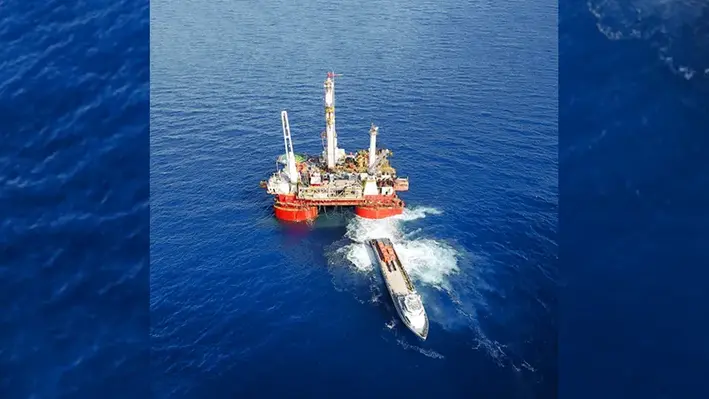
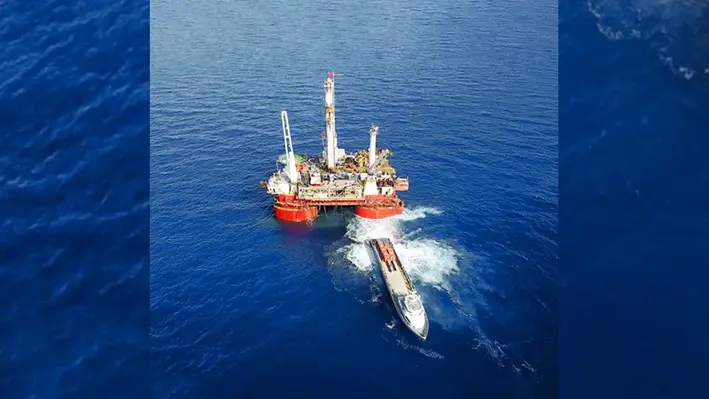 Helix Energy Solutions Group has reported a strong turnaround in its financial performance for the third quarter of 2025, posting a net income of US$22.1mn.
Helix Energy Solutions Group has reported a strong turnaround in its financial performance for the third quarter of 2025, posting a net income of US$22.1mn.
This marks a significant improvement from the US$2.6mn loss in the previous quarter, though slightly below the US$29.5mn recorded in the same period of 2024.
The company’s Adjusted EBITDA climbed to US$103.7mn, more than double the US$42.4mn achieved in Q2 2025, and higher than the US$87.6mn posted in Q3 2024. Third-quarter revenues also strengthened, reaching US$376.9mn, compared with US$302.3mn in the preceding quarter and US$342.4mn a year earlier.
For the first nine months of 2025, Helix reported net income of US$22.6mn on US$957.3mn in revenue, slightly lower than the US$35.5mn profit on US$1.003bn earned in the same period last year.
Owen Kratz, President and CEO of Helix, said the company’s latest results represent its highest quarterly EBITDA since 2014, demonstrating the business’s growth potential. “The strong Q3 results provide insight into the business’s earnings potential,” he said, noting the achievement came despite downtime on the Q4000 and the Seawell rigs being stacked.
Following the improved performance, Helix has revised its full-year 2025 Adjusted EBITDA guidance upwards to between US$240mn and US$270mn, and now expects free cash flow generation of US$100mn to US$140mn.
Operationally, the company saw robust results across several divisions. The robotics segment benefited from increased trenching and renewable energy operations, while the shallow water division recorded higher levels of activity.
Helix also secured key commercial contracts, including a four-year robotics trenching agreement in the North Sea and a Well Intervention contract in the Gulf of America.
Revenues in the Well Intervention segment grew 23 per cent sequentially, driven by higher utilisation of the Q5000 and Q7000 rigs, while robotics revenues increased 16 per cent thanks to stronger trenching demand. The shallow water abandonment division saw the sharpest rise up 47 per cent due to higher utilisation of the Epic Hedron vessel and improved asset activity.
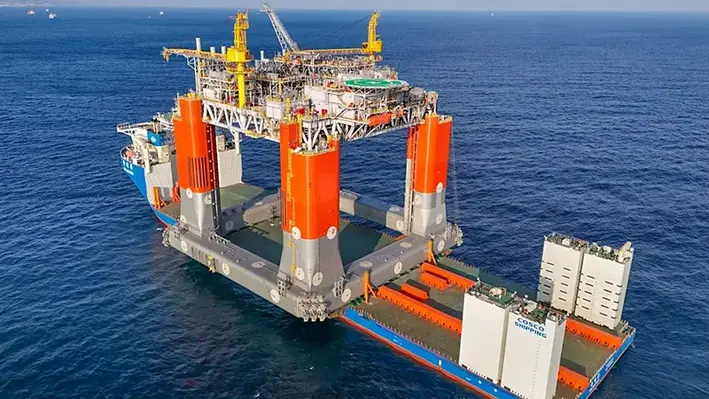
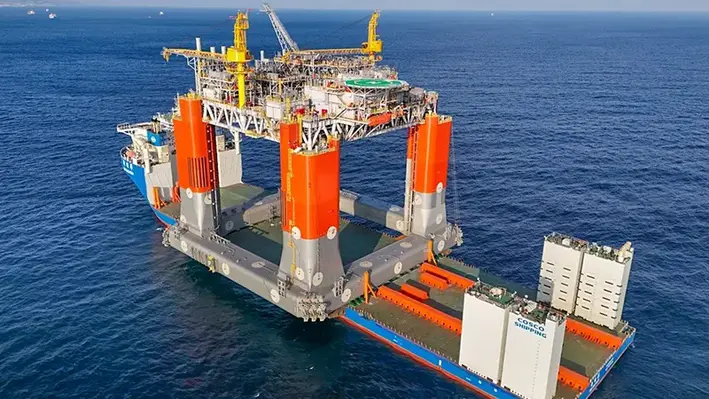 As part of Phase 1 development, four wells in the Shenandoah field have been ramped up by Beacon Offshore Energy to attain the target rate of 100,000 bopd / 117,000 boepd.
As part of Phase 1 development, four wells in the Shenandoah field have been ramped up by Beacon Offshore Energy to attain the target rate of 100,000 bopd / 117,000 boepd.
The Shenandoah floating production system (FPS) has proved its top tier operability as it delivered exceptional well productivity, reliability and uptime metrics, while accomplishing the ramp up target within 75 days following first production.
The Shenandoah reserves, located at reservoir depths of approximately 30,000 ft true vertical depth, are being developed utilising industry leading high pressure 20,000 psi technology which Beacon expects to facilitate development of other similarly situated fields in the Inboard Wilcox trend.
The Shenandoah FPS located on Walker Ridge 52 approximately 150 miles off the coast of Louisiana in a water depth of approximately 5,800 feet has a nameplate capacity of 120,000 bopd and 140 mmcfd. The Shenandoah FPS has been designed as a regional host facility that will enable development of additional resources including the Beacon-operated Monument and Shenandoah South discoveries which together with Shenandoah are expected to hold recoverable resources of nearly 600 MMBOE. Beacon is working alongside HEQ Deepwater and Navitas Petroleum to develop the Shenandoah project.


Fugro announced that it would showcase its latest digital innovations in offshore asset management at ADIPEC 2025, taking place in Abu Dhabi from 3–6 November.
Visitors to Fugro’s booth would see how the company was transforming conventional inspection workflows through advanced digital solutions, uncrewed surface vessels (USVs) and AI-powered analytics — all aimed at helping clients make faster decisions, lower costs and enhance sustainability.
Presented under the theme “Digital Geo-data”, Fugro’s exhibit would demonstrate how cutting-edge technology was redefining the monitoring and maintenance of offshore infrastructure. Among the key technologies were high-resolution 3D point clouds that replaced static drawings with interactive, navigable visuals; digital twins offering continuously updated virtual replicas of offshore assets for improved planning and maintenance; and AI-driven systems that automatically detected corrosion, flooded members and structural anomalies to enable predictive maintenance.
Fugro’s integrated approach focused on continuous, intelligent inspection using USVs to perform regular remote surveys. The data collected from these missions fed into AI platforms that identified potential issues before they developed into critical problems. This proactive system helped clients avoid costly downtime, strengthen asset reliability and make informed operational decisions.
The benefits of this digital transformation were clear: improved efficiency, reduced operational expenses and comprehensive datasets to support long-term asset management strategies. Fugro’s remote and autonomous technologies also contributed to sustainability objectives by reducing offshore vessel time and lowering CO₂ emissions, reinforcing the company’s commitment to a safer, more efficient and environmentally responsible offshore industry.

 Aquaterra Energy, a leading provider of offshore engineering solutions, has announced the appointment of Matt Marcantonio as its new Head of Engineering, marking an important milestone in the company’s ongoing growth and dedication to advancing offshore technologies.
Aquaterra Energy, a leading provider of offshore engineering solutions, has announced the appointment of Matt Marcantonio as its new Head of Engineering, marking an important milestone in the company’s ongoing growth and dedication to advancing offshore technologies.
With more than 18 years of experience in the offshore energy sector, Marcantonio is a well-known figure in the industry. In his new role, he will oversee Aquaterra Energy’s global engineering function, driving innovation, enhancing product development, and strengthening the company’s technical leadership across Well Access and Offshore Developments, including well intervention, late-life abandonment operations, and carbon capture and storage (CCS).
Marcantonio joins Aquaterra Energy after nearly 17 years with Claxton Engineering and 18 years within the Acteon Group, bringing with him substantial expertise in riser systems, bespoke tooling, and complex well abandonment projects. He also brings experience in platform design gained during his time with UWG and 2H. With a strong history of leading multidisciplinary engineering teams to deliver innovative offshore solutions, Marcantonio’s appointment will help advance Aquaterra’s strategic focus on expanding its engineering capabilities and accelerating the development of proprietary technologies such as the Recoverable Abandonment Frame (RAF), the AQC systems suite, and the Sea Swift platform.
George Morrison, CEO at Aquaterra Energy, commented, “Hiring a talent like Matt underscores our ambition to remain at the forefront of offshore energy innovation while addressing our clients’ offshore challenges. His combination of deep technical knowledge, product development experience and leadership capability will be instrumental as we expand globally and continue developing technologies that support the energy transition and deliver value across the full well lifecycle.”
Alongside enhancing Aquaterra’s intellectual property portfolio and promoting operational excellence across global projects, Marcantonio will also focus on mentoring the company’s emerging engineering talent, helping to strengthen skills within Aquaterra and the wider offshore industry.
Matt Marcantonio, Head of Engineering, added, “I’ve always admired Aquaterra Energy’s reputation for innovation and engineering excellence, so I’m delighted to be joining such a talented and ambitious team. This is a company that delivers practical, field-ready solutions to solve some of the offshore industry’s biggest challenges – from cost-effective abandonment to enabling the future of CCS. What excites me most is the chance to support the next generation of engineers, sharing experience and building confidence in a sector that urgently needs new talent. Together, we have the chance to strengthen Aquaterra’s position as a leader in offshore innovation and make a lasting impact across the energy industry.”

 As ExxonMobil Australia steps up decommissioning of ageing offshore oil and gas assets in the Gippsland Basin, the company is also repurposing onshore infrastructure as part of its ongoing energy transition and forward investment plans.
As ExxonMobil Australia steps up decommissioning of ageing offshore oil and gas assets in the Gippsland Basin, the company is also repurposing onshore infrastructure as part of its ongoing energy transition and forward investment plans.
That includes the demolition of the former Altona refinery facilities, which Mobil commenced in September.
Rhys Kelly, Terminal Manager, Melbourne Terminal, said in an update that this decommissioning work would continue for two more years.
“Demolition of former refinery infrastructure is a complex task,” he noted. “Work commenced in September 2025 and is expected to continue through to the end of 2027.”
It follows a review of future opportunities for parts of the Altona Terminal site which are not required for fuel terminal operations.
Following the review, the company is planning to demolish a number of tanks, former refinery process units and associated infrastructure that are not required to support its vision for a reliable supply of fuel to Victoria.
Since works to transition the Altona site to a world-class terminal began in 2021, it has refurbished a number of tanks, increasing fuel storage capacity by almost 250 million litres to ensure it can meet the federal government’s minimum fuel storage requirements, as well as maintain a vital role in supplying around 40% of Victoria’s fuel needs.
“This year, we continue to focus on delivering additional fuel storage across the Mobil Melbourne terminal, including at Gellibrand Wharf and the Altona site, so that we can maintain our supply of around 40% of Victoria’s fuel from Melbourne’s largest fuel storage and distribution terminal,” added Kelly.
“It has been a productive year, and we have completed many projects that will provide the additional storage required to support our ongoing, reliable supply of fuel to Victoria into the future.”
In a community bulletin, Mobil added that it had carefully planned the demolition work to ensure it is managed safely.
Given the nature of the work, it said there may be “noticeable changes” in the site profile, with the flare being one of the first assets to be removed.
Mobil added that it will also implement strict environmental controls to minimise impact on the neighbourhood, including completing most work during the day, industrial hygiene monitoring and using dust suppression.
“We have worked closely with regulators to obtain the necessary approvals and carefully planned the demolition works to minimise impacts on our neighbours,” said Kelly.
“We will also closely monitor the works so that we can quickly respond to any unexpected impacts if they occur.”
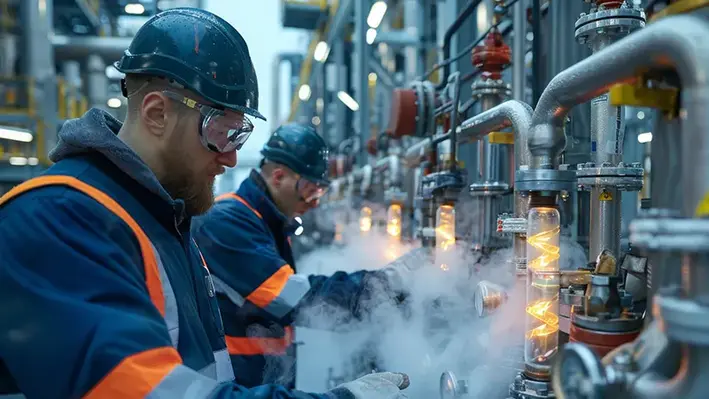
 The United Kingdom has witnessed the successful drilling of the country's first carbon storage appraisal well as part of its ambitious carbon capture and storage objectives.
The United Kingdom has witnessed the successful drilling of the country's first carbon storage appraisal well as part of its ambitious carbon capture and storage objectives.
According to Offshore Energies UK, this new well in the decommissioned Hewett gas field off Bacton on the coast of North Norfolk, will play a significant role in accelerating the path to net zero greenhouse gas emissions as it serves as a major carbon store in the region. The project reflects the UK industry's sustainable approach as it repurposes existing oil and gas infrastructure, delivering carbon capture and storage with the help of efficient supply chains and skilled workforce.
The site operated by the global energy company Eni, is part of the North Sea Transition Authority’s first carbon storage licencing round.
Powering the UK with gas for decades, the Hewett field will now boast a storage capacity of up to 10 million tonnes of CO2 annually as a large-scale carbon storage facility. This equals the yearly greenhouse gas emissions of around a fifth of all UK industry.
The location of Hewett is particularly well placed to support the decarbonisation of industry in Southern England and also industrial greenhouse gas producers in continental Europe.
With an aim to accelerate this process, Offshore Energies UK has initiated a round table with the European Commission, looking to navigate regulatory barriers that currently prevent cross border transport of carbon emissions.
The North Sea Transition Authority which oversees Britain’s carbon capture plans, has already awarded permits for the UK’s first two carbon storage projects. These are the Northern Endurance Partnership off Teesside in December 2024, and Liverpool Bay carbon capture and storage project in April 2025, which is also operated by Eni.
These two projects together could store more than 200 million tonnes of CO2, equivalent to taking 110 million cars off the road for a year. The permits have also unlocked £6bn worth of supply chain contracts and 4,000 construction jobs.
Enrique Cornejo, OEUK Head of Energy Policy, said, “This Hewett appraisal well is a powerful signal of industry’s commitment to invest in the UK’s net zero future. It shows how our existing energy infrastructure and expertise are being repurposed to deliver climate solutions. But for commercial carbon capture and storage to succeed at scale, government must accelerate a clear route to market for projects like Bacton CCS which are outside the government’s planned cluster sequencing process. The Hewett appraisal well is a tangible example of industry stepping up, and now it’s time for policy to keep pace.”
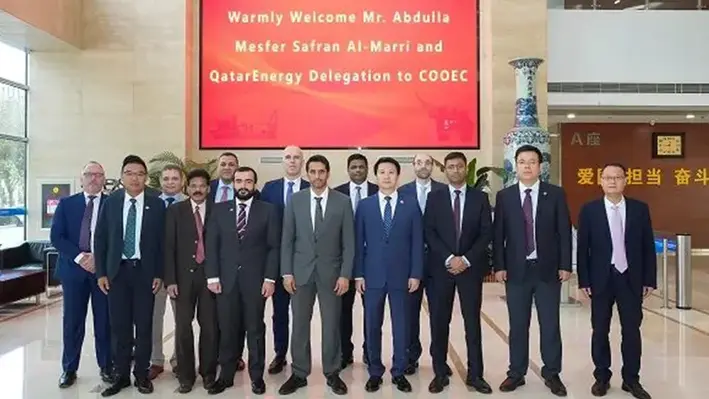
 The Qatar BH EPIC EPC (Engineering, Procurement and Construction) project is set to take off as Offshore Oil Engineering Co., Ltd. (COOEC) has kick-started meetings for the project development in Tianjin and Singapore.
The Qatar BH EPIC EPC (Engineering, Procurement and Construction) project is set to take off as Offshore Oil Engineering Co., Ltd. (COOEC) has kick-started meetings for the project development in Tianjin and Singapore.
This marks the full-scale launch of the largest international offshore oil and gas EPC project contracted by a Chinese company to date. Playing an important role in developing high-quality international oil and gas collaboration under the Belt and Road Initiative, the project will take China-Qatar energy cooperation to new heights.
Situated in the Bul Hanine (BH) oilfield in the Qatari waters of the Persian Gulf, about 100 kms east of the country's coastline, the project will be developed by QatarEnergy with substantial investments. It has a maximum water depth of approximately 40 meters.
Beyond its record-breaking contract value, the project also stands out for its unprecedented scope and technical complexity. It includes more than 60 offshore oil-and-gas facilities, as well as 40 subsea pipelines and cables, and covers the modification of existing platforms and the decommissioning of obsolete facilities.
The full-scale launch of the BH EPIC project will deepen energy cooperation between China and Qatar, and play an important role in advancing energy partnerships among The Belt and Road countries.
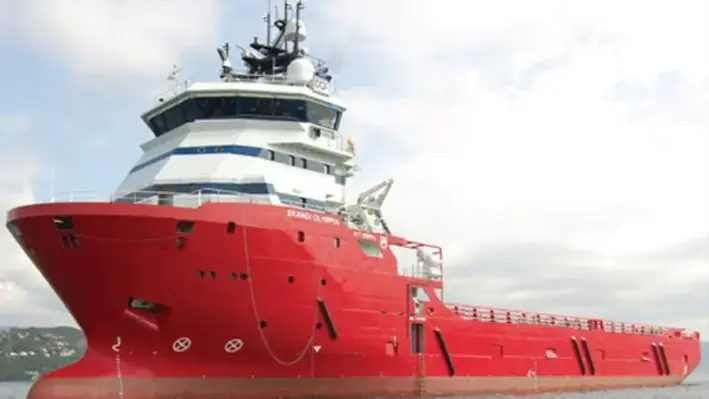
 DOF Group ASA has secured two new long-term contracts with Brazil’s state-owned energy company Petrobras.
DOF Group ASA has secured two new long-term contracts with Brazil’s state-owned energy company Petrobras.
Skandi Chieftain and Skandi Olympia have been awarded four-year charters with the operator, with both contracts offering a combined value of approximately US$200mn. Both vessels will operate with one WROV and are expected to be delivered in October 2026.
The contracts followed the same competitive tender process that resulted in the award of Skandi Achiever, Skandi Carla, Geoholm and Skandi Salvador on the RSV 2024 tender.
Last month the Group was also awarded three service contracts for work in Brazil under Petrobras for subsea inspections as part of the operator’s subsea programme.
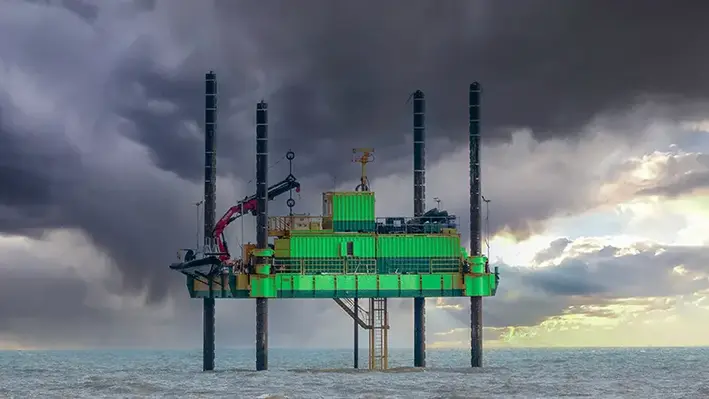
 The Shah Deniz consortium has recently awarded three significant offshore contracts valued at around US$700mn for the next phase of the Shah Deniz Compression (SDC) project.
The Shah Deniz consortium has recently awarded three significant offshore contracts valued at around US$700mn for the next phase of the Shah Deniz Compression (SDC) project.
These contracts, granted to the Saipem/BOS Shelf joint venture, will play a crucial role in expanding the capabilities of the Shah Deniz gas field, one of the world’s largest offshore gas reserves.
The work covered by the new contracts includes the transportation and installation of a 19,000-tonne compression platform, set to be placed in the Caspian Sea. Additionally, the project will involve the construction and installation of approximately 26 km of offshore pipelines, which will link the new compression facility with existing infrastructure at the Shah Deniz field.
Onshore activities will take place at the Baku Deep Water Jacket Factory, operated by BOS Shelf, while offshore construction will be carried out using two of Azerbaijan’s flagship vessels: the Khankendi subsea construction vessel, owned by the Shah Deniz consortium, and the Israfil Huseynov pipelay barge, owned by Azerbaijan Caspian Shipping Company (ASCO). Both vessels will be operated by Saipem, under the terms of the contracts.
According to Matt Kirkham, BP’s Vice President of Projects for Azerbaijan, Georgia, and Turkey, said, “With the award of these new contracts for major construction and installation works, we are making significant progress on the SDC project. The contracts will fully leverage local fabrication yards and infrastructure, engaging the local workforce. This once again demonstrates that Azerbaijan possesses world-class onshore fabrication and offshore installation capabilities that fully meet international standards. Just one example – between 2026 and 2028, a total of 3,040 tonnes of subsea structures will be fabricated and installed as part of the SDC project. It’s a remarkable piece of activity that highlights the scale and ambition of what we are delivering. I would like to thank everyone who was involved in finalizing these important contracts.”
Offshore work is expected to begin in the third quarter of 2026, with the overall project slated for completion in 2029. This ambitious US$2.9bn project aims to access and produce low-pressure gas reserves, with a target of adding 50 bn cubic metres of gas and 25mn barrels of condensate to the Shah Deniz output.
The new compression facility will be located about 3 km from the existing Shah Deniz Bravo platform in 85 metres of water. Equipped with four 11-MW compressors, the facility will be integral in compressing gas from the Shah Deniz Alpha and Bravo platforms before it is transported to the Sangachal terminal for export.
With construction set to wrap up by 2029, the SDC project will position the Shah Deniz field as a vital player in the global energy market for years to come.
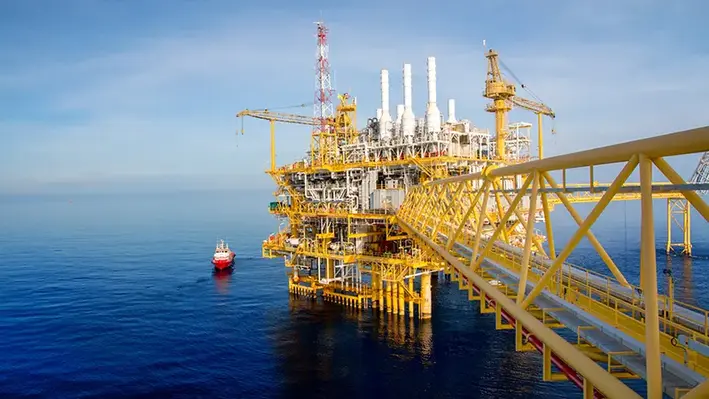
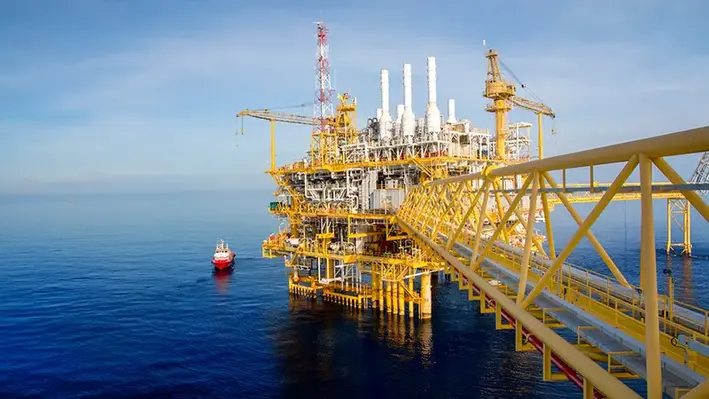 The journey toward large-scale carbon capture and storage (CCS) is gaining momentum, but significant technological and operational challenges continue to slow progress.
The journey toward large-scale carbon capture and storage (CCS) is gaining momentum, but significant technological and operational challenges continue to slow progress.
According to the CCS Wells Technology Roadmap, a comprehensive report published by the Net Zero Technology Centre (NZTC) in collaboration with DNV and commissioned by the UK’s North Sea Transition Authority (NSTA), key gaps remain in the deployment and optimisation of monitoring technologies essential to ensuring safe, efficient, and long-term CO₂ storage.
The report highlights that while technologies such as Vertical Seismic Profiling (VSP), microseismic monitoring, pulsed neutron logging, and tracer systems are critical to tracking CO₂ movement and storage integrity, each faces its own limitations that must be addressed to unlock the full potential of CCS.
For Vertical Seismic Profiling (VSP), the challenges centre around high operational costs, complex logistics, and limited spatial coverage beyond the wellbore. Although Distributed Acoustic Sensing (DAS) VSP offers enhanced spatial resolution, fibre-optic longevity and signal quality over extended periods, often decades, remain pressing concerns. The report also points out that conducting repeated surveys can be resource-intensive, impacting the long-term sustainability of monitoring programmes.
In microseismic monitoring, the quality of data is often affected by background noise, sensor coupling, and the difficulty of pinpointing small events within deep storage formations. While DAS-based systems can enhance coverage, they still fall short in sensitivity and low-frequency response compared to geophones. Automating the discrimination between injection-induced and natural seismicity, and developing real-time interpretation systems for timely risk response, remain major technological gaps.
When it comes to pulsed neutron logging, the report notes challenges in distinguishing CO₂ in low-porosity or thinly bedded formations. The presence of saline water or complex lithologies can distort results, complicating saturation analysis. Differentiating CO₂ from hydrocarbons, which both exhibit low hydrogen index signals, is also problematic. Achieving accuracy requires robust baseline data, calibration, and the integration of multiple logging methods. As cited by the report, Kim et al. proposed an approach that helps distinguish CO₂ from hydrocarbon gases in depleted gas reservoirs, an important step forward in refining this method.
Meanwhile, tracer technology still faces issues with long-term stability, especially for nanoparticle and biomarker tracers, along with potential cross-contamination and detection challenges in dilute CO₂ plumes. Infrastructure limitations, particularly in offshore or remote sites, compound the issue. The roadmap also highlights the need for improved integration of tracer data with other monitoring results, stronger regulatory frameworks for leakage quantification, and validation of new tracers for environmental safety over extended storage lifespans.
Across all these methods, the NZTC and DNV report underscores a common challenge: scaling field pilots to commercial operations that can run reliably over decades. It calls for more automation, better data integration, and enhanced sensor and tracer durability in CO₂-rich environments.
The information in this article has been extracted from The CCS Wells Technology Roadmap, a report published by the Net Zero Technology Centre (NZTC) and DNV, commissioned by the UK’s North Sea Transition Authority (NSTA). To explore the complete findings and insights, read the full report here.
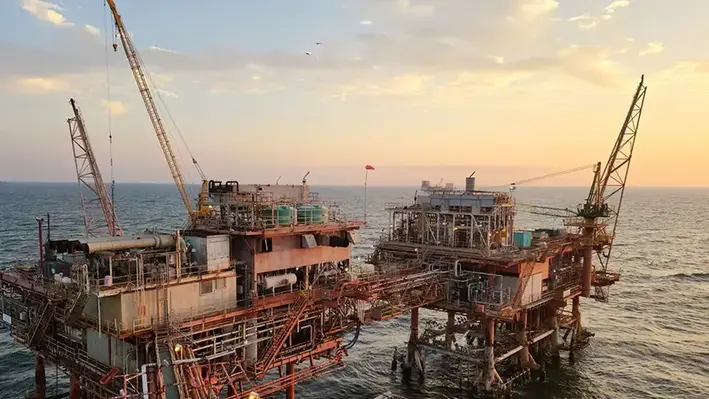
 Navigating the pressures of burgeoning decommissioning liabilities of North America and the Government-flagged urgency for immediate action, Petrofac recently initiated the 'Boomerang' project, mobilising a team to take over custody of the field in only a month.
Navigating the pressures of burgeoning decommissioning liabilities of North America and the Government-flagged urgency for immediate action, Petrofac recently initiated the 'Boomerang' project, mobilising a team to take over custody of the field in only a month.
The company's extensive experience and industry connections allow it to equally leverage the local and global supply chain, thus offering a resonable and customised service with the best suited equipment and crews, in a very tight and competitive market. Such measures helped Petrofac deliver the significant Danos decommissioning project in the Gulf of Mexico by collaborating with more than 250 vendors. It saw Petrofac tackling end-to-end decommissioning services, from project management, planning and engineering to procurement, field execution oversight and fast-tracking mobilisation of industry-leading experts.
To achieve cost efficiency that forms the core of Petrofac's approach to decommissioning, the company resorts to new approaches and innovations to match the project scale.
For instance, deploying compact, low-cost crews for pre-decommissioning activities, involving diagnostic and wellhead maintenance work can ensure better planning, permitting and cost estimating.
Other economic ways employed by the company includes well work delegation to groups of 3-6 people, alongside equipment upgradation, crew utilisation and ensuring minimal non-productive time.
“This significant contract recognises our industry-leading decommissioning programme management experience and our unique in-house capability to manage all well and asset decommissioning phases.
“Four decades of global expertise will be applied to the project, complemented by our already strong onshore presence in Texas,” said Iain Murray, President, Americas, Asset Solutions.

 Kuwait Oil Company (KOC), part of Kuwait Petroleum Corporation (KPC), announced the discovery of the Jaza Offshore Gas Field on Monday, which has achieved the highest vertical well output ever recorded from the Minagish formation in Kuwait
Kuwait Oil Company (KOC), part of Kuwait Petroleum Corporation (KPC), announced the discovery of the Jaza Offshore Gas Field on Monday, which has achieved the highest vertical well output ever recorded from the Minagish formation in Kuwait
This marks a significant milestone following a series of successful maritime exploration ventures, including the discovery of the Al Nokhatha field in July 2024 and the Al Jlaiaa field in January 2025, according to KPC's statement.
Initial tests on the Jaza-1 well have shown impressive production levels, with natural gas output exceeding 29 million standard cubic feet per day (MMSCFD) and condensates exceeding 5,000 barrels per day (BPD). The reservoir stands out due to its low carbon dioxide content, the complete absence of hydrogen sulfide, and the lack of associated water, making it a rare and environmentally significant find in the region.
The initial assessed area of the field spans about 40 square kilometres, with early estimates placing its reserves at around 1 trillion standard cubic feet of gas and over 120 million barrels of condensate. This equates to approximately 350 million barrels of oil equivalent (BOE). KOC noted that these early figures are subject to revision, with further exploration across the field's prospects likely to increase the overall reserves.
Page 8 of 111